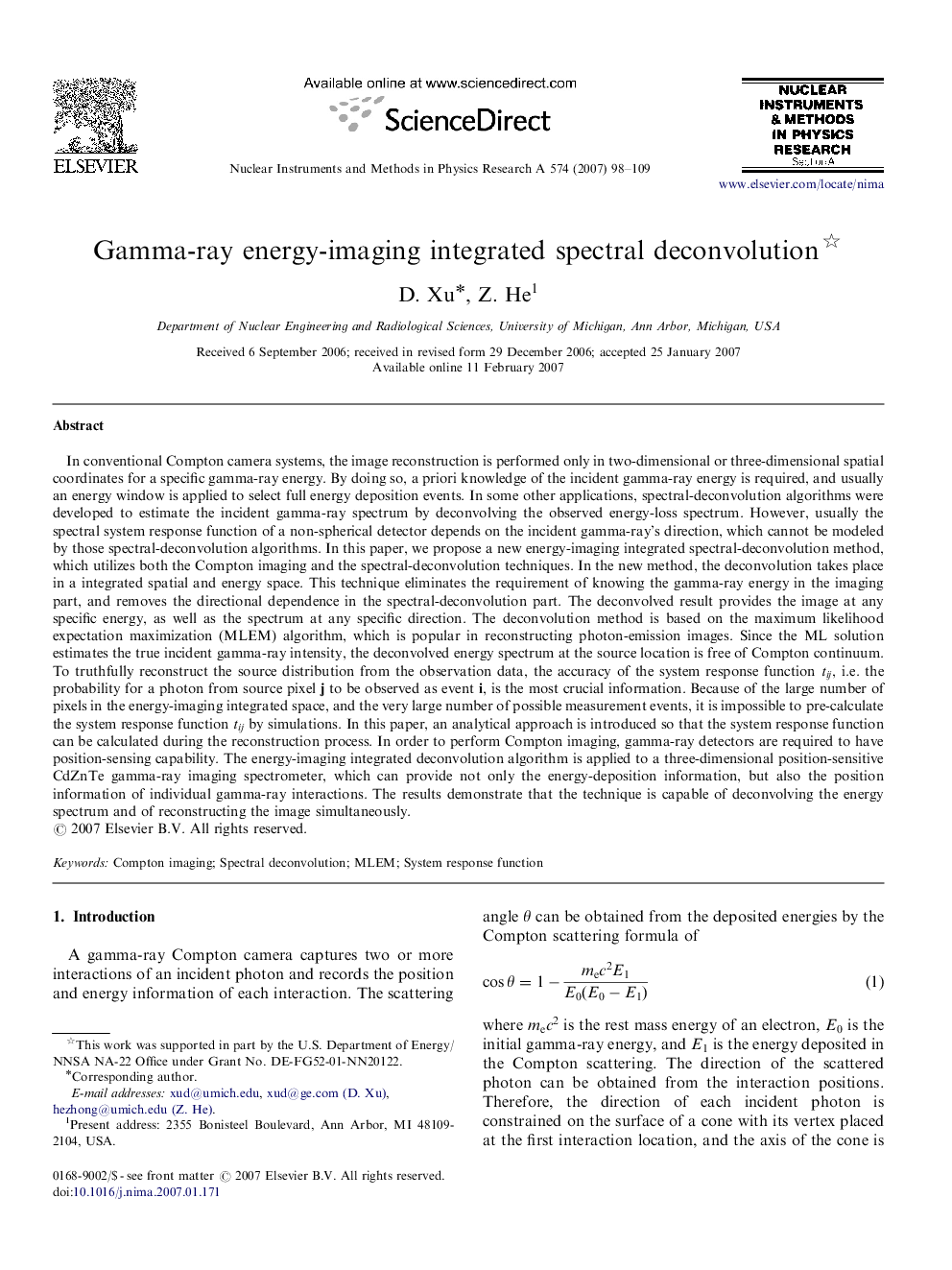| کد مقاله | کد نشریه | سال انتشار | مقاله انگلیسی | نسخه تمام متن |
|---|---|---|---|---|
| 1831715 | 1027503 | 2007 | 12 صفحه PDF | دانلود رایگان |

In conventional Compton camera systems, the image reconstruction is performed only in two-dimensional or three-dimensional spatial coordinates for a specific gamma-ray energy. By doing so, a priori knowledge of the incident gamma-ray energy is required, and usually an energy window is applied to select full energy deposition events. In some other applications, spectral-deconvolution algorithms were developed to estimate the incident gamma-ray spectrum by deconvolving the observed energy-loss spectrum. However, usually the spectral system response function of a non-spherical detector depends on the incident gamma-ray's direction, which cannot be modeled by those spectral-deconvolution algorithms. In this paper, we propose a new energy-imaging integrated spectral-deconvolution method, which utilizes both the Compton imaging and the spectral-deconvolution techniques. In the new method, the deconvolution takes place in a integrated spatial and energy space. This technique eliminates the requirement of knowing the gamma-ray energy in the imaging part, and removes the directional dependence in the spectral-deconvolution part. The deconvolved result provides the image at any specific energy, as well as the spectrum at any specific direction. The deconvolution method is based on the maximum likelihood expectation maximization (MLEM) algorithm, which is popular in reconstructing photon-emission images. Since the ML solution estimates the true incident gamma-ray intensity, the deconvolved energy spectrum at the source location is free of Compton continuum. To truthfully reconstruct the source distribution from the observation data, the accuracy of the system response function tijtij, i.e. the probability for a photon from source pixel jj to be observed as event ii, is the most crucial information. Because of the large number of pixels in the energy-imaging integrated space, and the very large number of possible measurement events, it is impossible to pre-calculate the system response function tijtij by simulations. In this paper, an analytical approach is introduced so that the system response function can be calculated during the reconstruction process. In order to perform Compton imaging, gamma-ray detectors are required to have position-sensing capability. The energy-imaging integrated deconvolution algorithm is applied to a three-dimensional position-sensitive CdZnTe gamma-ray imaging spectrometer, which can provide not only the energy-deposition information, but also the position information of individual gamma-ray interactions. The results demonstrate that the technique is capable of deconvolving the energy spectrum and of reconstructing the image simultaneously.
Journal: Nuclear Instruments and Methods in Physics Research Section A: Accelerators, Spectrometers, Detectors and Associated Equipment - Volume 574, Issue 1, 21 April 2007, Pages 98–109